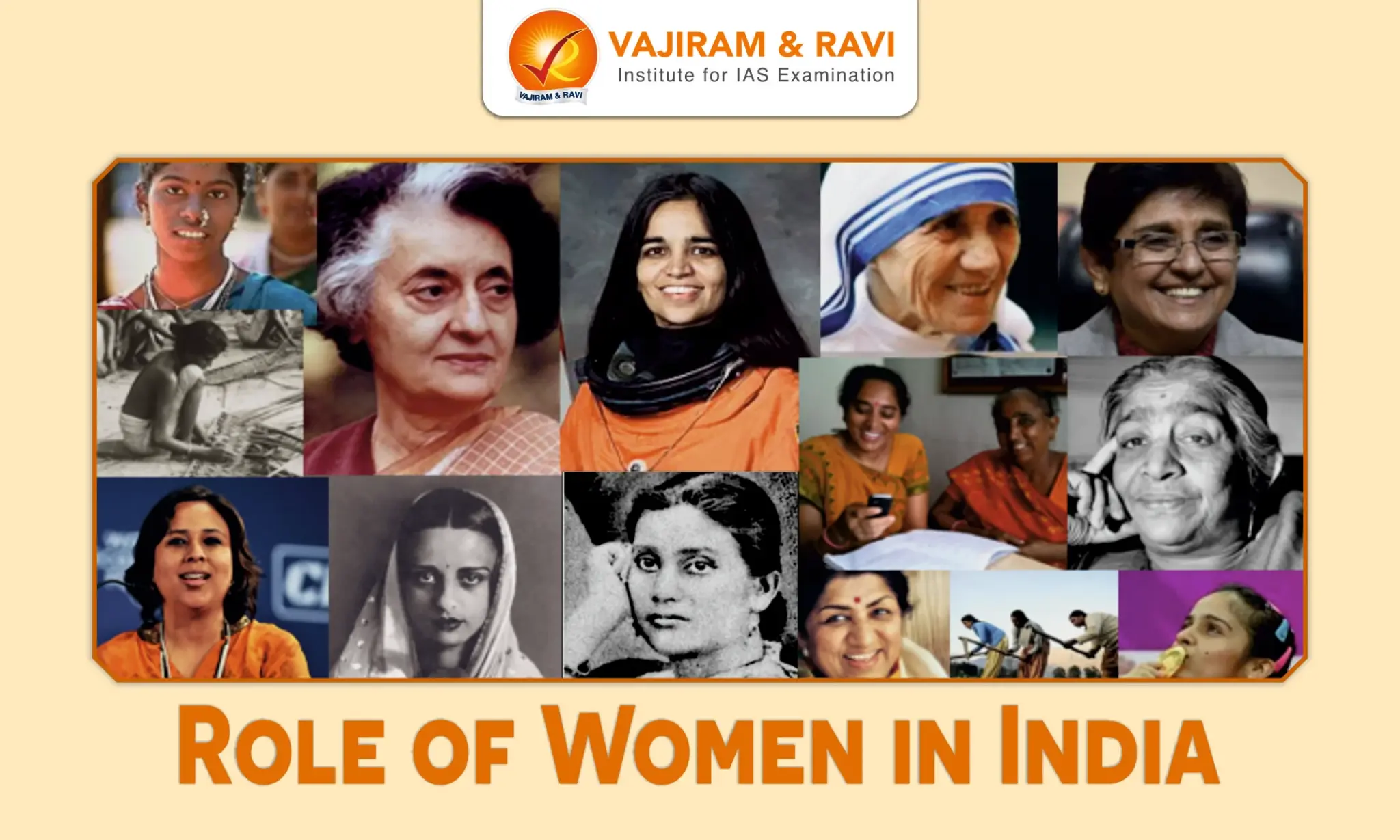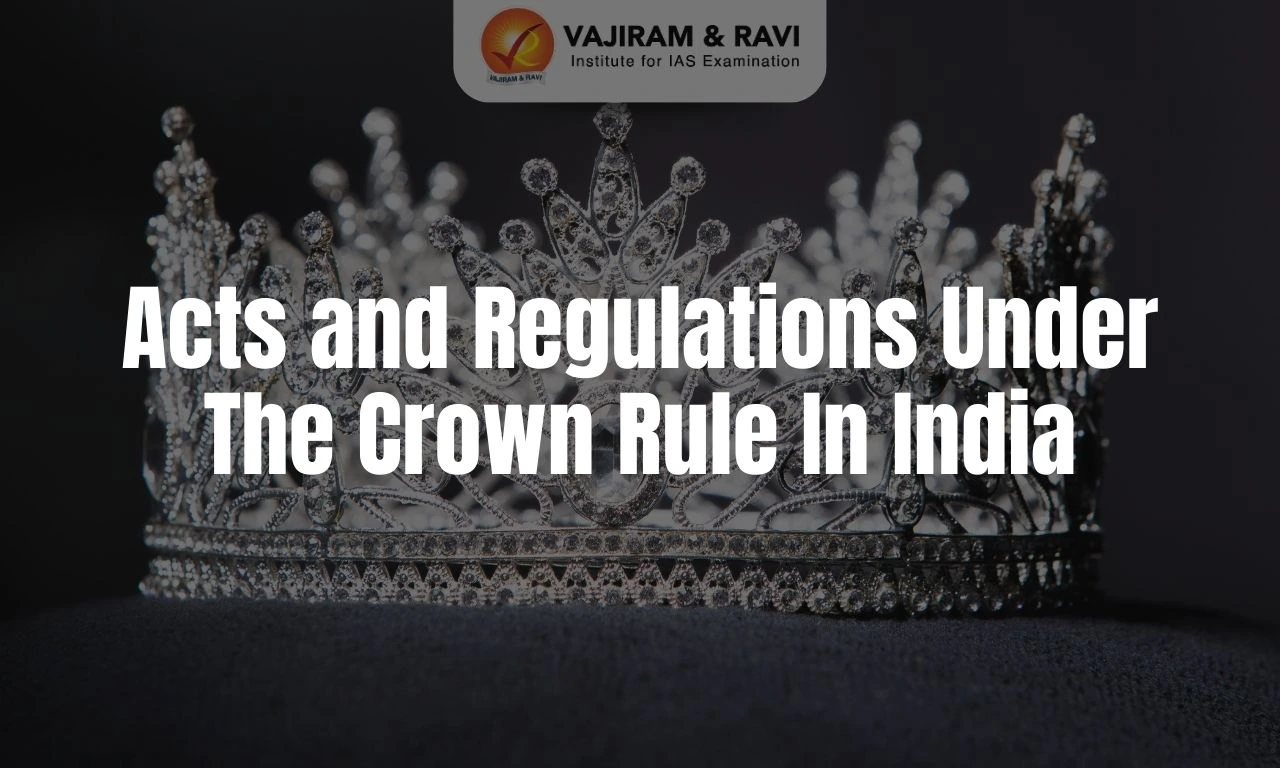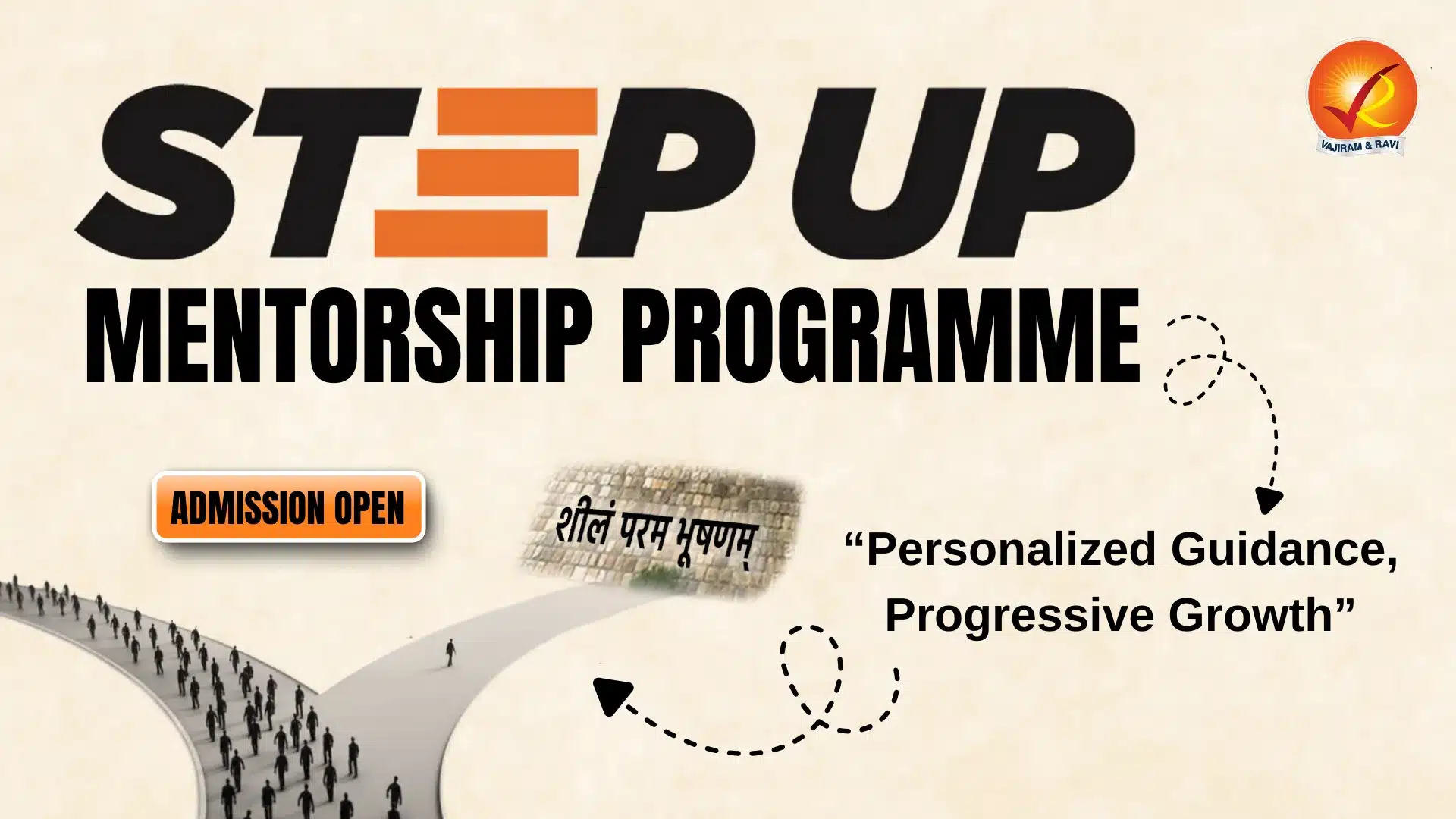How has the role and status of women in India evolved over time?
The role and status of women in India's history have been complex and varied. Historically, the Indian society has been patriarchal, with men holding more power and status than women.
- During the Indus Valley civilization, and the Vedic period, Women enjoyed equal status in society.
- They participated politically by attending Sabha and Samithis. Some significant female figures of the Vedic period are Ghosha, Lopamudra, Sulabha Maitreyi, and Gargi.
- The status of women began to decline in the later Vedic period, and many social restrictions were placed upon them. There was evidence of sati during the Gupta Period.
- During Medieval times, the social status of a woman, both in Hindu and Muslim communities, was very low.
- Females belonging to the nobility observed purdah and were rarely allowed to go outside the house. The custom of sati has become more common.
- With the rise of Social reform movements, there was an improvement in the status of women in Indian Society during British rule.
- With the efforts of reformers, Sati was abolished in 1829, and the Widow Remarriage Act was passed in 1856.
- Women participated in the Indian anti-imperialist struggle in large numbers through important movements.
What is the role of women in Indian society in general?
In traditional Indian society, the social role of women has been primarily as a wife and mothers. In recent years, there has been a shift in the social role of women in India.
- Family:
- Women are the key to sustainable development and quality of life in the family.
- Various roles women assume in the family are those of wife, leader, administrator, manager of family income, and most importantly, the mother.
- Education:
- Women play a key role in educating children. The development of future generations depends upon women.
- According to an Annual Status of Education Report (ASER) report, the education levels of a mother have a strong correlation with the holistic development of children.
- Health/ Public health:
- Women are responsible for 70-80% of all the healthcare provided in India. Female healthcare providers can be important in educating society to recognize their health and nutrition needs.
- Women professionals and the empowerment of women at all levels are required for the improvement of the health and nutrition status in India.
- Food Security:
- Women are essential contributors to all four aspects of food security, including availability, access, utilization, and stability.
- They serve as food producers, farmers, and entrepreneurs, as well as "gatekeepers" who make critical decisions and invest time and income to ensure the food and nutrition security of their households and communities.
What is the role of women in Indian politics?
The political role of women in India has been complex and evolving. Historically, women in India have been underrepresented in politics, with a low percentage of women in positions of power.
- Women's political participation is a fundamental prerequisite for gender equality and genuine democracy.
- There is also strong evidence that as more women are elected to office, there is a corollary increase in policy-making that emphasizes quality of life and reflects the priorities of families, women, and ethnic and racial minorities.
- The three main parameters to assess the state of women’s participation in politics in India are: Women voter turnout, women's candidature in elections, and women representation in political offices.
- The female voter turnout in the Lok Sabha elections has increased from 46.6% in 1962 to 66.9% in 2019, which indicates their increasing role in politics. Also, the number of female representatives in the Lok sabha increased from 5% in 1951 to 14% in 2019.
- Representation of women leaders at the grassroots level in India is nearly 50%, especially since the 73rd and 74th amendments in 1992, which allotted one-third of all seats to women.
What is the role of women in India's Economic growth story?
The economic role of women in India has traditionally been limited, with many women facing cultural, social, and economic barriers that prevent them from fully participating in the workforce. However, in recent years, there has been a growing recognition of the important role that women play in the Indian economy.
- The present contribution of women to the national GDP is around 18%.
- In India, women comprise 48% of the agricultural workforce and own only 13% of the land. Women in India constitute around 20% of the manufacturing workforce and around 30% of the total workforce in the services sector.
- At present, there are 432 million women of working age in India, out of which 343 million are employed in the unorganized sector.
- India has the 3rd largest ecosystem in terms of Startups in the world, and 10% of them have been led by women founders. Also, research shows that ventures started by women are more sustainable in nature.
- In 2022, a survey among 250 Indian companies revealed that the share of women in the Chief Executive Officer or Managing Director roles has increased by55% which reflected significant growth in their role in driving the economy.
What is the role of women in environmental conservation and sustainable development?
In India, women have traditionally played a significant role in environmental conservation and management, particularly in rural communities where they often rely on natural resources for their livelihoods and well-being.
- In most developing countries like India, women play a major role as farmers, animal rearers, and water and fuel collectors.
- Various environmental movements like the Bishnoi movement, Chipko Movement, Appiko movement, Silent valley movement, and Narmada Bachao Andolan are the significant environmental movements of India that reflect the integral leadership of women.
- The government of India has adopted various policies and programmes such as the Joint Forest Management (JFM) program of the 1990s mandated that women comprise 33% of the membership in the management committees.
- Today, there is a growing emphasis on "mainstreaming" women's role in the planning, implementing, and monitoring of all sustainable development and environmental management programmes.
What measures could help enhance the role of women?
- Improving access to education: By increasing access to quality education for girls, as well as education and training programs that help women to develop the skills they need to participate in the workforce.
- Providing support services: Support services such as affordable childcare,healthcare, and transportation can help women to balance the demands of work and family life.
- Encouraging women's participation in leadership roles: Initiatives to promote women's leadership in politics, business, and other fields, as well as mentoring and networking programs that help women to develop the skills and connections they need to succeed.
- Addressing discrimination and bias: This includes efforts to combat discrimination and bias in the workplace, as well as in other areas of life.
- Encouraging community participation: Encouraging community participation and creating an enabling environment for women to take on leadership roles through creating platforms for dialogue, capacity-building, and networking.
Last updated on December, 2025
→ Check out the latest UPSC Syllabus 2026 here.
→ Join Vajiram & Ravi’s Interview Guidance Programme for expert help to crack your final UPSC stage.
→ UPSC Mains Result 2025 is now out.
→ UPSC Notification 2026 is scheduled to be released on January 14, 2026.
→ UPSC Calendar 2026 is released on 15th May, 2025.
→ The UPSC Vacancy 2025 were released 1129, out of which 979 were for UPSC CSE and remaining 150 are for UPSC IFoS.
→ UPSC Prelims 2026 will be conducted on 24th May, 2026 & UPSC Mains 2026 will be conducted on 21st August 2026.
→ The UPSC Selection Process is of 3 stages-Prelims, Mains and Interview.
→ UPSC Result 2024 is released with latest UPSC Marksheet 2024. Check Now!
→ UPSC Prelims Result 2025 is out now for the CSE held on 25 May 2025.
→ UPSC Toppers List 2024 is released now. Shakti Dubey is UPSC AIR 1 2024 Topper.
→ UPSC Prelims Question Paper 2025 and Unofficial Prelims Answer Key 2025 are available now.
→ UPSC Mains Question Paper 2025 is out for Essay, GS 1, 2, 3 & GS 4.
→ UPSC Mains Indian Language Question Paper 2025 is now out.
→ UPSC Mains Optional Question Paper 2025 is now out.
→ Also check Best IAS Coaching in Delhi
Role of Women in India FAQs
Q1. What is Chipko Movement? +
Q2. What is the female labor force participation rate?+
Tags: quest role of women in india

















